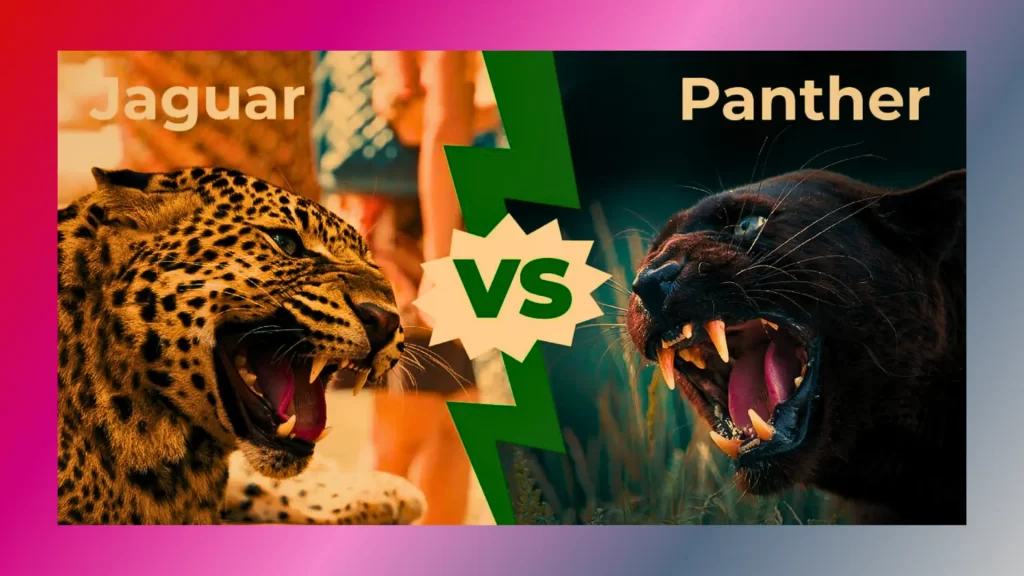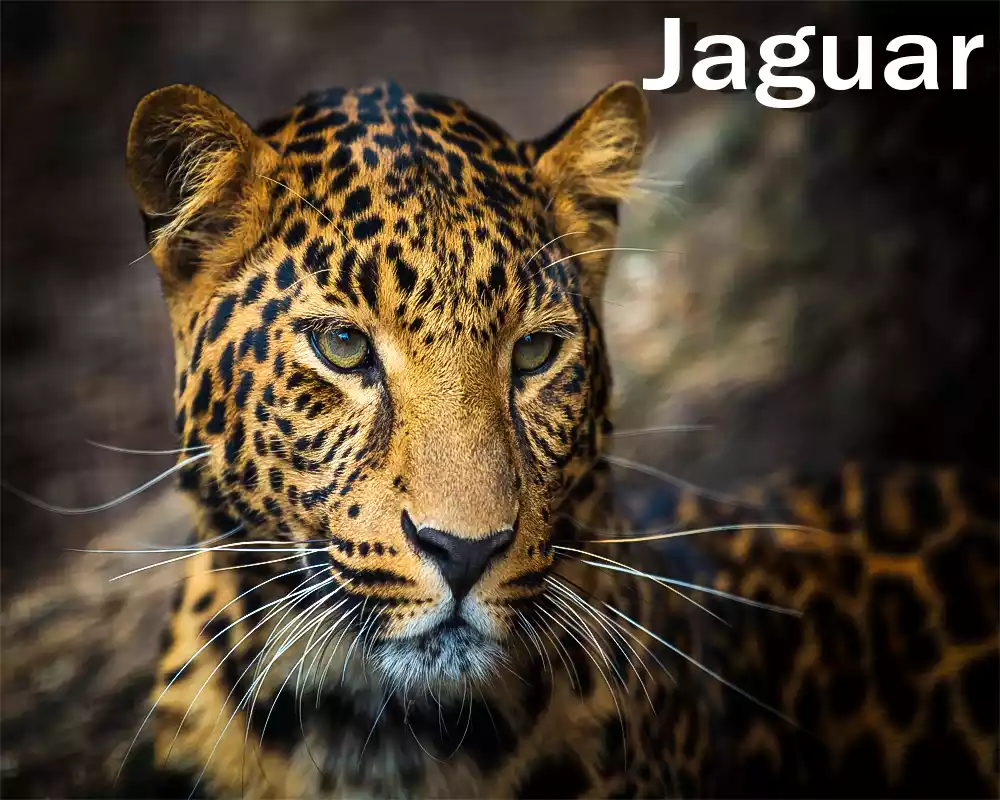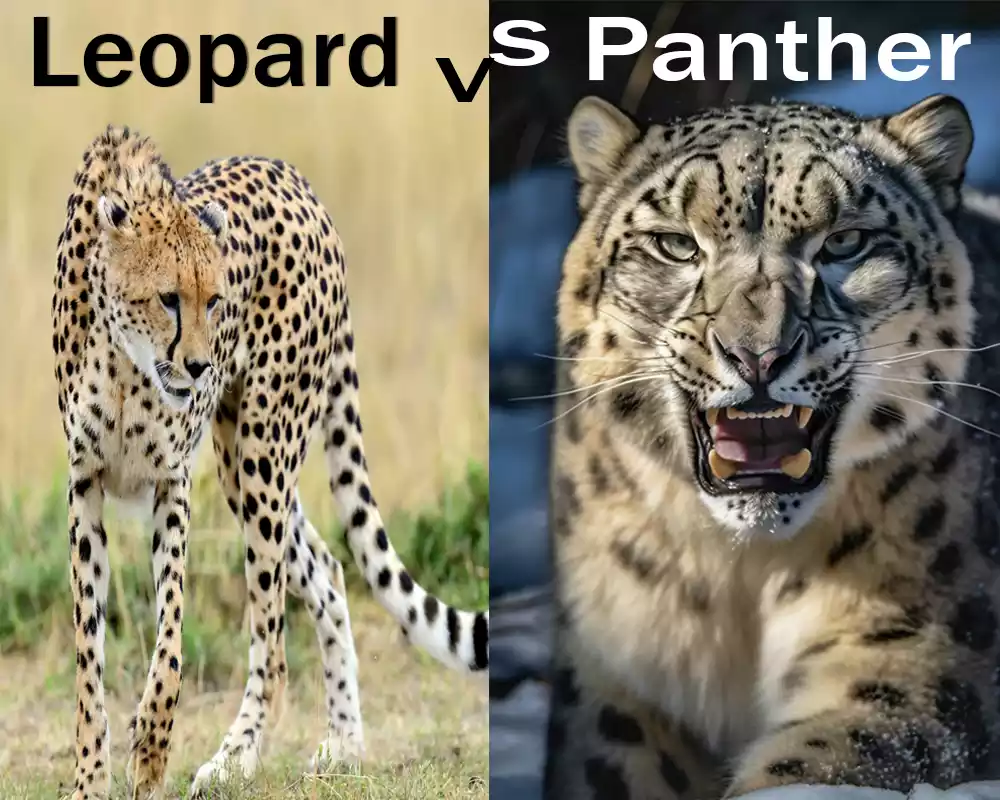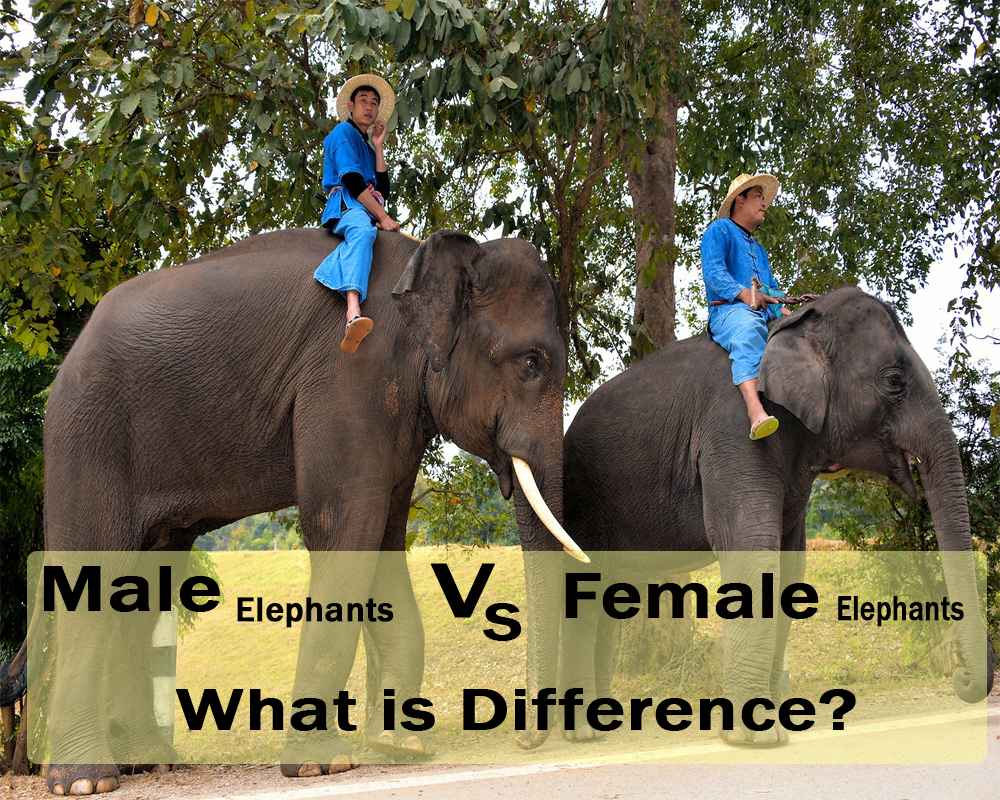Jaguar and Panther are both captivating big cat species that evoke a sense of awe and wonder. Jaguars, known for their robust build and beautiful rosette patterns, primarily inhabit the Americas. They are skilled hunters, exhibiting remarkable swimming abilities and a diverse diet. Panthers, including leopards and black panthers, can be found in various parts of the world and possess a striking black coat due to melanism. They are stealthy predators with exceptional camouflage. Both species face threats such as habitat loss and illegal hunting, emphasizing the importance of conservation efforts. Understanding and protecting these magnificent creatures ensures their continued presence in our natural world. Jaguar and Panther is the most important of wildlife.
The Jaguar and Panther may share certain similarities, but they also possess distinct characteristics that set them apart. Understanding their taxonomy, physical appearance, habitat, behavior, and conservation status enhances our appreciation for these magnificent creatures. By valuing and protecting their natural habitats, we can ensure the continued existence of these awe-inspiring big cats for generations to come.
Origin of Jaguar and Panther

The origins of the Jaguar and Panther can be traced back to their respective species and evolutionary history.
Jaguar: The jaguar, scientifically known as Panthera onca, has its origins in the Americas. It is believed to have evolved around 1.8 million years ago during the Pleistocene epoch. Jaguars are part of the Panthera genus, which also includes other roaring big cat species such as lions, tigers, and leopards. The Panthera genus is believed to have originated in Asia and later spread to different parts of the world.
Panther: The term “panther” is more general and does not refer to a specific species but rather encompasses different species of big cats, including leopards and jaguars. The evolutionary origins of panther species vary depending on the specific type. Leopards (Panthera pardus) are native to Africa and parts of Asia. They have a long evolutionary history, with fossils dating back to the late Pliocene epoch. On the other hand, jaguars can also be considered panthers, and their origin is discussed above.
The jaguar’s origin can be traced back to the Americas, specifically evolving within the Panthera genus. Panthers, including leopards and jaguars, have their origins in different parts of the world, with leopards originating in Africa and parts of Asia.
Taxonomy and Classification
Felidae Family: The Jaguar and Panther belong to the Felidae Family, which encompasses all felines including lions, tigers, leopards, and cheetahs.
Panthera Genus: The Jaguar and Panther belong to the Panthera Genus of big cats that roar, such as lions, tigers, and leopards. Roaring is a unique characteristic that distinguishes these cats from other members of the Felidae Family.
What is Panther?
The term is used for any cat with dark pigments. This includes leopards and cougars as well as mountain lions or tigers. It is most commonly used about the Black Panther.
Three continents are home to this species: Africa, Asia, and the Americas.
Panthers are powerful and agile members of the family. It is also very adaptable, as its geographical diversity makes clear.
It is considered endangered despite belonging to a higher taxonomic group than species because the Jaguars and Leopards are declining in numbers.
Panthers typically come in either dark brown or black shades; with two exceptions being White Panthers and Florida Panthers that can be found throughout North America.
Their ability to roar is what makes them stand out from the rest of their feline family. The height and weight of each species and gender are different.
Some, particularly males can even reach 250 kilogrammes.

The Panther is a brilliant animal that guards its territory. The Panthers live a solitary existence, hunting at night and resting during the day.
The dark brown and black color of their fur makes them appear invisible in the woods. They can then detect their prey and capture it without anyone noticing.
They are also excellent climbers.
The Panthers don’t start opening their eyes for two weeks after birth. They are highly vulnerable before the end of the first few months. This is especially true when their mothers have to leave to hunt.
They can follow their mother to hunt for food after a few weeks. However, they do not leave her until the age of two years. Then, the males separate to create their territory. The male panthers are territorial and will be threatened if another male enters their territory.
Kew note
- Panthers are large felines of the Felidae family, which includes black-colored leopards and Jaguars. A jaguar, on the other hand, is a large feline native to America.
- Black jaguars and leopards are both considered to be Panthers. Jaguars, on the other hand, are distinct animals characterized by a stocky body and a distinctive coat pattern.
- Jaguars and tawny-colored coats often have dark spots, rosettes, or spots. Panthers, on the other hand, are typically melanistic.
What is Jaguar?
This is a big cat species that can be found primarily in America. The only cat of the Panthera species native to America is this feline. The tiger, lion, and this kitten are the other two largest in the entire world.
Jaguars are similar in appearance to Leopards, but their spots are much more intricate and often have a central spot. Like all cats of the Panthera family, they are powerful, agile, and live a nocturnal, solitary lifestyle.
Jaguars are revered in several South American ancient cultures. In art and archaeology, their images appeared along the natural range of habitats that initially spanned from Central Argentina to the South-Western United States of America.
Since the 1880s they have been displaced from much of their original territory by industrialization and urbanization. The Amazon Basin is home to the majority of them.
A smaller number of Jaguars can also be found in the grasslands and savannahs of Central America.

Jaguars are different from other cats because they can swim. They are good swimmers and can prey on fish, turtles, and caimans. Their powerful jaws help them to penetrate their prey’s skulls.
Trapping them during the night is also a good way to catch peccaries and other animals like deer, capybaras, and tapirs.
Jaguars, like all panthers, are territorial. The Jaguars are born blind, and they remain susceptible to predators until their mother can take them hunting with her.
Their mothers protect them at night from animals and even their fathers. After two years, they separate from their mother.
Characteristics of Jaguar and Panther
Jaguar:
- Size and Build: Jaguars are the third-largest big cat species, following tigers and lions. They have a robust build and muscular body, with males being larger and heavier than females.
- Coat and Coloration: Jaguars have a distinctive coat pattern with rosettes, which are rose-shaped markings enclosing smaller spots. Their fur color can vary from tawny yellow to reddish-brown, and the rosettes are often black. This pattern provides effective camouflage in their forested habitats.
- Habitat and Range: Jaguars are primarily found in the Americas, ranging from the southern United States to northern Argentina. They inhabit various ecosystems, including rainforests, swamps, grasslands, and dry scrub areas.
- Hunting and Diet: Jaguars are apex predators known for their exceptional hunting skills. They have powerful jaws and can deliver a lethal bite. Their diet includes a wide range of prey such as capybaras, deer, tapirs, fish, and caimans. Jaguars are skilled swimmers and can even catch fish in rivers and lakes.
Panther:
- Panther as a General Term: The term “panther” is more general and can refer to different species of big cats, including leopards and jaguars. It is used to describe the melanistic (black) variants of these species.
- Black Panther Coloration: Black panthers, which can be either black jaguars or black leopards, have a sleek coat that is entirely black due to a genetic condition called melanism. Although the coat appears black, when observed closely, the rosette patterns can still be faintly seen.
- Habitat and Range: Panthers, including leopards and black panthers, can be found in various parts of the world. Leopards are found in Africa and parts of Asia, while black panthers can also be found in the Americas. They adapt to different habitats, including forests, grasslands, and mountains.
- Stealth and Hunting: Panthers are solitary and stealthy hunters. They possess excellent camouflage, allowing them to blend into their surroundings and stalk their prey. Panthers are known for their agility and powerful leaps, enabling them to pounce on their unsuspecting prey. Their diet consists of animals such as ungulates, rodents, birds, and other small to medium-sized mammals.
Jaguars are known for their robust build, distinctive coat patterns with rosettes, presence in the Americas, and remarkable swimming abilities. Panthers, as a broader term, include both leopards and black panthers. Black panthers, whether they are black jaguars or black leopards, have striking black coats due to melanism. Understanding the characteristics of the jaguar and panther helps in appreciating their unique adaptations and ecological roles as magnificent big cats.
The key difference between jaguar and panther
The key difference between the jaguar and panther slices is their specific species and geographic range.
Jaguar:
- Jaguar is a specific species belonging to the Panthera genus.
- They are exclusively found in the Americas, ranging from the southern United States to northern Argentina.
- Jaguars have a robust build, muscular bodies, and distinctive coat patterns with rosettes.
- Their coat color can vary from tawny yellow to reddish-brown, adorned with black rosettes and spots.
Panther:
- Panther is a more general term that can refer to different species of big cats, including leopards and jaguars.
- Black panthers are the melanistic variants of these species.
- They can be black jaguars or black leopards.
The key difference is that jaguars are a specific species found in the Americas, while panthers are a broader term encompassing different species, including black jaguars and black leopards, found in various parts of the world.
Comparison Table between Jaguar and Panther
| Aspects | Jaguar | Panther |
|---|---|---|
| Species | Panthera onca | Various species (Leopard, Jaguar, etc.) |
| Geographic Range | Americas (southern United States to northern Argentina) | Various regions (Africa, Asia, Americas) |
| Coat Color | Tawny yellow to reddish-brown with black rosettes and spots | Black (due to melanism in black panthers) |
| Habitat | Rainforests, swamps, grasslands, and scrub areas | Various habitats (forests, grasslands, mountains) |
| Size | Third-largest big cat species | Varies depending on the specific species |
| Hunting Style | Powerful bite, exceptional swimming abilities | Stealthy, ambush predators with exceptional agility |
| Prey | Capybaras, deer, tapirs, fish, caimans | Ungulates, rodents, birds, small to medium-sized mammals |
| Conservation Status | Near Threatened (IUCN Red List) | Varies depending on the specific species |
| Distinct Feature | Robust build, muscular body | Melanistic (black) coat in black panthers |
Jaguar and Panther Interactions with Humans
Jaguar and panther are powerful and charismatic big cat species and have had varied interactions with humans throughout history. These interactions have ranged from cultural symbolism and reverence to conflicts and conservation efforts.
Cultural Significance: Both panthers and jaguars have cultural significance in various regions. The jaguar is a sacred animal in many indigenous cultures throughout the Americas. It represents power, strength, and protection. In mythology, art, and folklore it is frequently depicted as a symbol of the connection between humans, and nature. In the same way, leopards, black panthers, and other panthers have held cultural significance for many societies. In folklore and literature as well as religious contexts they have been depicted, with qualities like stealth, agility, and mystery.
Conflicts and Challenges: Human-wildlife conflict has arisen due to the expansion and encroachment of human settlements into natural habitats. Jaguars in particular have been faced with significant challenges due to the fragmentation of their habitats. This has led to an increase in interactions between humans and jaguars. Conflicts with livestock farmers have resulted when jaguars attack domestic animals. This leads to economic losses as well as retaliatory deaths. Leopards and other panthers have faced conflict in areas where human settlements are close to their habitats.
Conservation Efforts: Recognizing the critical nature of conserving these majestic animals, conservation initiatives have been implemented to mitigate human-wildlife conflicts and safeguard habitat. Conservancy groups, governments, and local communities work in concert with each other to raise awareness, implement sustainable farming practices, and foster coexistence between humans and big cat species. Efforts include the establishment of protected areas, wildlife corridors, and initiatives to reduce human-wildlife conflicts through measures such as livestock compensation programs, education, and community engagement.
Legislation and Protection: Legal protection measures have been put in place to safeguard the jaguar and panther. International and national laws such as CITES restrict the trade of their body parts and manage their conservation status, with jaguar and panther species such as leopards being listed on the International Union for Conservation of Nature Red List to highlight their needs for preservation and fuel further conservation initiatives.
Research and Monitoring: Scientific monitoring and research are crucial to understanding jaguars’ and panthers’ behavior, ecology, and population status. Researchers use a variety of techniques to collect data, such as camera traps and genetic analysis. Satellite tracking is also used. This information helps to inform conservation strategies and guide effective management plans.
The interactions between humans, jaguars, and panthers include cultural significance, conflicts, and conservation efforts. They also encompass legal protection and scientific research. We can help ensure that these majestic big cats survive for generations to come by fostering coexistence and promoting conservation.
Conservation Status of Jaguar and Panther
The conservation status of panthers and jaguars varies according to the species and geographical distribution. This is a brief overview of the conservation status of these majestic big cat species.
Jaguar: Jaguar (Panthera Onca) is on the International Union for Conservation of Nature’s Red List as an endangered species, yet still found across various ecosystems throughout North and South America despite declining populations. Their survival is threatened by habitat loss, fragmentation, conflict with humans, and predation on livestock – as well as illegal trade of their skins or body parts for profit – with conservation efforts focused on safeguarding habitats, creating protected areas to prevent poaching practices, implementing measures against poaching activity and strengthening local community partnerships as ways forward in protecting these magnificent cats’ preservation efforts are directed.
Panther (Leopard): Panthera pardus) can vary considerably in its conservation status depending on which specific species or geographical areas it inhabits. An example of Critical Endangerment on the IUCN Red List is African leopards which have become endangered primarily because of habitat loss, illegal wildlife trade, and conflict with humans; on the other hand, Amur leopards located in Russian Far East are critically endangered with only an estimated population size of 100 individuals remaining today. Other leopard subspecies, including Indian leopard and Sri Lankan leopard populations, also face threats and are listed as vulnerable. Conservation efforts aim to safeguard habitats while combatting illegal wildlife trade, mitigating human-leopard conflicts, and raising conservation awareness.
Black Panther: Black Panther, commonly used to refer to melanistic jaguars or leopards, inherits its conservation status from their respective species. For instance, melanistic jaguars are considered Near Threatened just like their non-melanistic counterparts while African leopards or Amur leopards may differ depending on subspecies status.
Conservation efforts geared at jaguars, panthers, and their environments involve research, habitat protection efforts, anti-poaching measures, community involvement efforts, public awareness campaigns, and engagement opportunities for communities worldwide. International organizations, national governments, and local communities all play key roles in safeguarding these magnificent big cats from further decline and guaranteeing their continued existence in nature.
The conservation status of these species can fluctuate as new data and research become available, thus necessitating ongoing efforts to monitor populations, address threats to them and implement effective conservation measures.
Behavior and Hunting Process of Jaguar and Panther
Jaguar Behavior and Hunting Process:
Jaguars (Panthera onca) are known for their solitary and elusive nature. They are primarily nocturnal animals, being more active during the night.
Here are some key aspects of their behavior and hunting process:
- Stealth and Ambush: Jaguars are stealthy hunters. They rely on their excellent camouflage and silent movements to approach their prey undetected. They have a low and sturdy build, allowing them to move through dense vegetation without making much noise.
- Powerful Bite: Jaguars have one of the strongest bites among big cats. Their jaws are designed to deliver a lethal bite to their prey, piercing through the skull or crushing bones. This powerful bite enables them to take down a variety of prey, including larger animals.
- Swimming Abilities: Jaguars are exceptional swimmers and are known to hunt in water. They can swim across rivers and lakes, often surprising their prey by launching from the water’s edge. Jaguars are known to catch fish, turtles, and caimans, displaying their versatility as skilled hunters.
- Ambush Strategy: Jaguars employ an ambush strategy when hunting. They patiently wait for the opportune moment to launch a surprise attack on their prey. Once within striking range, they use their powerful jaws and sharp claws to swiftly subdue and kill their target.
Panther Behavior and Hunting Process:
Panthers, including leopards and black panthers, exhibit similar hunting behaviors.
Here are some key aspects of their behavior and hunting process:
- Stealth and Camouflage: Panthers are known for their ability to blend into their surroundings. Their coat patterns, whether spotted or black, provide effective camouflage in their habitats. They use this advantage to stalk their prey, remaining hidden until the opportune moment to strike.
- Stalking and Pouncing: Panthers are skilled stalkers. They meticulously observe their prey from a concealed position, patiently closing the distance. Once within striking range, they unleash a rapid and powerful pounce, using their muscular bodies and sharp claws to immobilize the prey.
- Agile and Acrobatic: Panthers, especially leopards, are renowned for their agility and climbing skills. They can ascend trees effortlessly, using branches as vantage points or to stash their kills away from scavengers. This behavior helps them protect their food and maintain their energy reserves.
- Opportunistic Diet: Panthers have a diverse diet, preying on a wide range of animals, including ungulates, rodents, birds, and smaller mammals. Their adaptability allows them to take advantage of available food sources in their respective habitats.
Both the jaguar and panther exhibit remarkable hunting skills and behaviors suited to their specific environments. Their ability to adapt to different habitats and employ efficient hunting strategies showcases their prowess as apex predators. Understanding their behavior and hunting process is crucial for appreciating these magnificent big cats and supporting their conservation efforts.
Habitat and Distribution of Jaguar and Panther
Jaguar Habitat and Distribution: Jaguars (Panthera onca) are primarily found in the Americas, inhabiting a range of diverse ecosystems.
Here are some key aspects of their habitat and distribution:
- Geographic Range: Jaguars have a wide distribution, extending from the southern United States through Central America and into South America, including countries such as Mexico, Brazil, Peru, and Argentina. They have a discontinuous distribution due to habitat fragmentation.
- Habitat Preferences: Jaguars occupy various habitats, including rainforests, swamps, grasslands, and scrub areas. They have a preference for dense vegetation and proximity to water sources, as they are skilled swimmers.
- Neotropical Rainforests: Jaguar populations are particularly prominent in the neotropical rainforests of the Amazon basin, where their elusive nature allows them to thrive amidst the dense vegetation and abundant prey.
- Range Flexibility: Jaguars are adaptable to a range of environments, including montane forests, open savannas, and even arid regions. This adaptability contributes to their ability to survive in different ecosystems within their geographic range.
Panther Habitat and Distribution: Panthers, including leopards and black panthers, have a wider distribution across different parts of the world.
Here are some key aspects of their habitat and distribution:
- Geographic Range: Leopards have the most extensive distribution among panther species. They are native to Africa, including sub-Saharan Africa, as well as parts of Asia, including the Indian subcontinent, Southeast Asia, and parts of the Middle East.
- Habitat Preferences: Panthers (including leopards ) inhabit various ecosystems, reflecting their adaptability. They can be found anywhere from forests to grasslands to mountains to semi-arid regions – their adaptability helps ensure wide distribution.
- African Leopards: Leopards in Africa are associated with many habitats including savannas and rainforests. They also live in mountainous areas. They are adaptable in their habitat selection and can survive in dense forests as well as more open landscapes.
- Asian Leopards: In Asia, leopards are found in diverse habitats, such as the tropical rainforests of Southeast Asia, the rugged landscapes of the Himalayas, and the arid regions of Central Asia.
The black panther is not a separate species but a melanistic variant of both jaguar and Panther. Black jaguars can be found within the jaguar’s range in the Americas, while black leopards are found in various parts of Africa and Asia.
Understanding the habitat preferences and distribution of the jaguar and panther is essential for implementing effective conservation strategies and ensuring the long-term survival of these magnificent big cat species.
Diet and Feeding Habits of Jaguar and Panther
Jaguar Diet and Feeding Habits: Jaguars (Panthera onca) are opportunistic predators with a diverse diet.
Here are some key aspects of their diet and feeding habits:
- Carnivorous Diet: Jaguars are carnivores, primarily feeding on a variety of prey species. Their diet includes mammals, reptiles, fish, and birds. They have a broad food spectrum, allowing them to adapt to different environments and prey availability.
- Large Prey: Jaguars can take down large prey, such as deer, tapirs, and peccaries. Their powerful jaws and muscular build enable them to deliver a fatal bite, often piercing the skull of their prey.
- Hunting Strategies: Jaguars employ different hunting strategies based on their prey and environment. They are known for their stealthy approach, patiently stalking their target before launching a surprise attack. They may use camouflage, vegetation cover, and water bodies to their advantage, ambushing prey from proximity.
- Water-based Prey: Jaguars are skilled swimmers and are known to hunt in water. They are capable of catching fish, turtles, and caimans by silently approaching them in rivers and lakes.
Panther Diet and Feeding Habits: Panthers, including leopards and black panthers, share similar dietary preferences and feeding habits.
Here are some key aspects of their diet and feeding habits:
- Carnivorous Diet: Panthers are also carnivores, relying on meat as their primary food source. Their diet consists of a variety of prey, including ungulates (such as deer and antelope), small mammals, birds, and reptiles.
- Opportunistic Hunting: Panthers are opportunistic hunters, adapting their hunting strategies based on the availability of prey. They use stealth, agility, and patience to stalk and ambush their targets, often pouncing from a concealed position.
- Climbing and Tree Habits: Leopards, in particular, are known for their ability to climb trees with agility. They often drag their kills into trees, where they can feed undisturbed and protect their food from scavengers.
- Nighttime Activity: Panthers, like jaguars, are primarily nocturnal hunters. They are more active during the night, utilizing their keen senses and adaptations for low-light conditions to hunt successfully.
Both the jaguar and panther have evolved as efficient predators, adapting their hunting techniques to suit their habitats and prey availability. Their ability to take down a variety of prey, including larger animals, showcases their strength and hunting prowess. Understanding their diet and feeding habits is essential for conservation efforts, as it helps identify the key factors necessary for their survival and ensures the preservation of their natural prey populations.
Threats and Conflicts of Jaguar and Panther
Jaguar Threats and Conflicts: Jaguars (Panthera onca) face several threats and conflicts that impact their survival and conservation efforts.
Here are some key aspects of the challenges they encounter:
- Habitat Loss and Fragmentation: Deforestation and habitat conversion for agriculture, logging, and urbanization are major threats to jaguars. The destruction and fragmentation of their habitats reduce their available range, making it difficult for them to find suitable territories and access prey.
- Human-Wildlife Conflict: Jaguars sometimes come into conflict with humans, especially in areas where their habitat overlaps with agricultural lands or livestock grazing areas. Jaguars may prey on livestock, leading to retaliatory killings by farmers seeking to protect their livelihoods.
- Poaching and Illegal Wildlife Trade: Jaguars are targeted by poachers for their skins, bones, and other body parts, driven by demand for the illegal wildlife trade. This illicit trade contributes to the decline of jaguar populations and undermines conservation efforts.
- Lack of Awareness and Conservation Support: Limited awareness about the importance of jaguars and their ecological role can hinder conservation efforts. Insufficient support and funding for conservation initiatives, as well as inadequate law enforcement, further exacerbate the threats faced by jaguars.
Panther Threats and Conflicts: Panthers, including leopards and black panthers, also encounter various threats and conflicts that affect their populations.
Here are some key aspects of the challenges they face:
- Habitat Loss and Fragmentation: Similar to jaguars, panthers are threatened by habitat loss and fragmentation due to human activities. Deforestation, conversion of natural habitats, and encroachment into their territories disrupt their ecological balance and reduce their available range.
- Human-Wildlife Conflict: Panthers, particularly leopards, may come into conflict with humans when their habitats overlap with human settlements or agricultural areas. Conflict arises when panthers prey on livestock, leading to retaliatory killings or human safety concerns.
- Illegal Wildlife Trade: Panthers, including their valuable skins and body parts, are targeted by criminal wildlife trade networks. Poaching for their fur, bones, and other body parts continues to pose a significant threat to their populations.
- Lack of Protected Areas and Conservation Measures: Underprotected areas and conservation efforts that don’t apply directly to panther species hinder efforts for their preservation. Strengthening protected areas, adopting anti-poaching measures that work, and encouraging coexistence between humans and panthers are essential for their long-term survival.
Addressing these threats and conflicts requires collaborative efforts among governments, conservation organizations, local communities, stakeholders, and others. Implementation of measures like habitat protection, anti-poaching initiatives, community engagement efforts, and public awareness campaigns are imperative to guaranteeing jaguars, panthers, and their species’ survival and well-being in their ecosystems.
How to protect Jaguar and Panther
It is vital to their long-term survival and conservation that jaguars, also known as Panthera onca, and panthers (including leopards and black cats) are protected. These are the key strategies and actions that will help to protect these majestic big cats.
- Habitat Conservation: Preserving and protecting their natural habitats are of utmost importance, from creating protected areas, national parks, and wildlife corridors that serve as suitable homes for the jaguar and panther to stopping the destruction, deforestation, and fragmentation due to human activities like logging, agriculture, and urbanization.
- Anti-Poaching Efforts: Implementing robust anti-poaching measures is critical. This includes increasing patrols and surveillance in key areas, employing well-trained park rangers and anti-poaching units, and utilizing technology such as camera traps and drones to monitor and deter illegal activities. Stricter penalties and law enforcement against poachers and wildlife traffickers are necessary to combat the illegal wildlife trade.
- Community Engagement: Involving local communities living in and around jaguar and panther habitats is crucial for successful conservation. Engaging with communities through education programs, awareness campaigns, and sustainable livelihood initiatives helps foster a sense of stewardship and encourages their active participation in conservation efforts. It is important to address human-wildlife conflicts, provide alternative income opportunities, and promote coexistence between communities and big cats.
- Research and Monitoring: Conducting scientific research and monitoring programs are vital for understanding the population dynamics, behavior, and ecology of the jaguar and panther. This information can guide conservation strategies and help identify priority areas for protection. Collaborative efforts between scientists, conservation organizations, and local stakeholders are essential for gathering accurate data and developing effective conservation plans.
- International Cooperation: Promoting international cooperation is key to addressing the conservation challenges faced by the jaguar and panther, especially for migratory species that cross national borders. Sharing knowledge, resources, and best practices among countries and organizations can enhance conservation efforts and facilitate the implementation of coordinated actions.
- Public Awareness and Advocacy: Raising public awareness about the importance of protecting the jaguar and panther is crucial for garnering support. Education campaigns, public outreach initiatives, and media platforms can help disseminate information about the threats these big cats face and the significance of their conservation. Encouraging responsible tourism that supports conservation initiatives and respects the natural habitats of the jaguar and panther can also contribute to their protection.
- Sustainable Land Use Practices: Promoting sustainable land use practices such as responsible agriculture, forestry, and infrastructure development is critical for mitigating habitat degradation and fragmentation. Fostering practices that protect biodiversity while mitigating human-wildlife conflicts is vital to strike an equitable balance between development and conservation efforts.
By implementing these measures collectively, we can ensure the protection of the jaguar and panther, preserve their habitats, and promote their coexistence with humans. It is our shared responsibility to safeguard these iconic big cats for future generations and maintain the ecological balance of our planet.
Final thoughts
The Jaguar and Panther, with their majestic presence and vital ecological roles, are awe-inspiring creatures that deserve our utmost protection. These enigmatic big cats face numerous threats, including habitat loss, hunting, and human-wildlife conflicts. However, through concerted conservation efforts, we can secure their future and ensure their continued existence in the wild.
Preserving their habitats is paramount. Establishing protected areas and wildlife corridors, along with strict enforcement against habitat destruction and fragmentation, is crucial for their survival. Anti-poaching measures and combating the illegal wildlife trade are essential to curb the threats faced by these magnificent felines.


